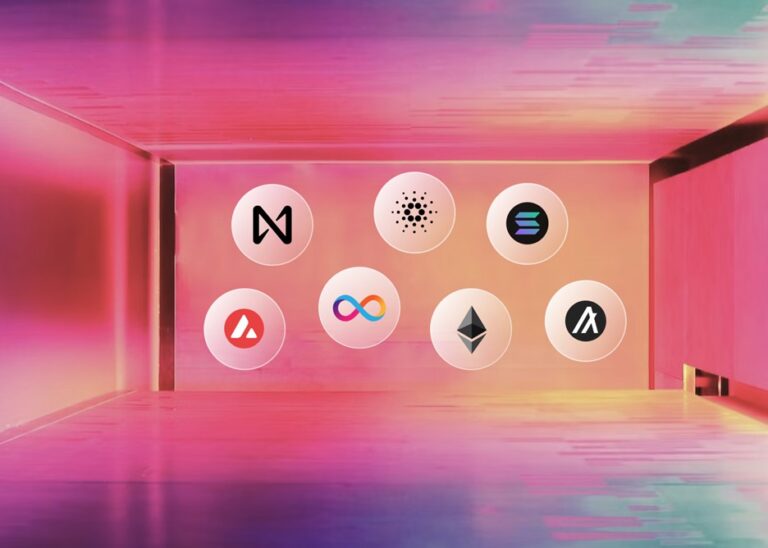
Crypto expertise has made unimaginable strides in the previous couple of years and now the blockchain protocol business is extraordinarily aggressive. As advances in pace, scale, and energy consumption have been made, the promise of Web3 and the expansion of a blockchain-based Web are starting to redefine what’s attainable in expertise.
Blockchain expertise was first launched with Bitcoin as a financial instrument for creating and managing cryptocurrency. After the launch of Ethereum, it shortly advanced into programmable cash and good contracts. Now blockchain goals to counter the centralization of all databases, storage and computation to help modern new DApps and companies.
Because the business evolves from a dominant give attention to financial merchandise to a revolutionary decentralized expertise stack for Web3, a handful of key metrics are helpful to match and consider Layer 1 opponents: transaction throughput, finality, transaction price, power effectivityand On-Chain Storage Prices.
This text offers an summary of those metrics from main logs, sourced from public datasets and real-time dashboards, to offer a transparent and comparative image of the level at which these chains are at present working.
transaction throughput
For blockchain networks to draw customers, they have to be capable to ship an expertise that meets the expectations of right now’s internet customers, and achieve this in a scalable method. This implies offering quick website and utility display screen loading (reads) and reasonably quick knowledge writes. Most blockchains carry out properly sufficient on reads, however Layer 1 protocols can battle to scale their knowledge writes to accommodate thousands and thousands of customers and nonetheless present a very good person expertise.
Throughput is a measure that captures a community’s scalability — the flexibility of a blockchain to jot down knowledge and replace state for thousands and thousands and billions of internet customers and Web of Issues (IoT) units. With the intention to present mainstream web customers with a satisfying person expertise, a blockchain should be capable to course of hundreds of transactions per second. Solely Solana and the Web laptop present precise transaction speeds undertaking this feat, though most of Solana’s transactions are validator voting transactions. Voting transactions don’t exist with different chains; The SolanaFM Explorer places Solana’s true TPS at round 381. Different chains both did not generate the required visitors to show high throughput, or they aren’t technically able to reaching high throughput.
finality
Finality refers back to the common time that elapses between proposing a brand new legitimate block containing transactions till the block is full and its contents are assured to not be undone or modified. (For some blockchains like Bitcoin, figuring out the tip time can solely be probabilistic.) This metric additionally impacts person expertise, as customers are unlikely to make use of functions that take quite a lot of seconds to finish an operation.
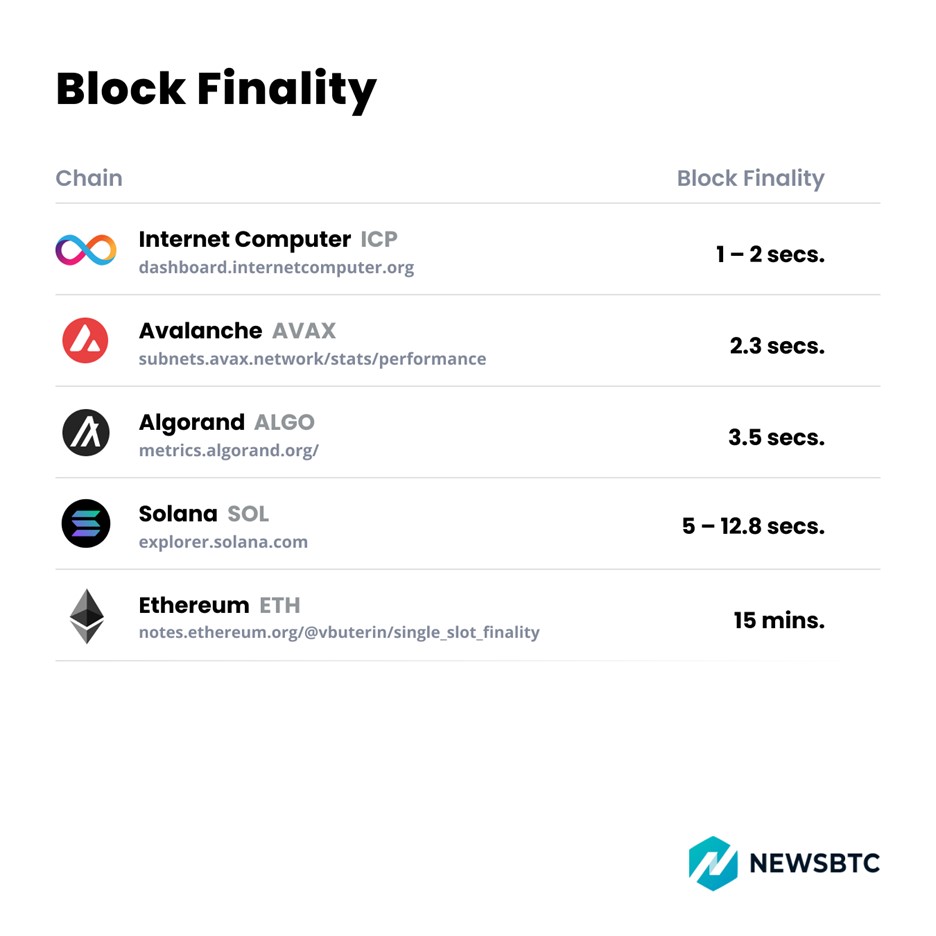
transaction prices
Blockchain has its roots as a financial product that may supply a lot decrease transaction prices than conventional finance and execute transactions sooner. Excessive transaction prices have formed the best way we use the web and monetize content material. Due to these prices, content material and utility creators are inclined to desire bigger transactional value fashions equivalent to subscriptions or bulk content material purchases. Transaction prices are usually correlated ultimately with the value of their related community tokens, so the values beneath are present as of writing the week of November 14, 2022.
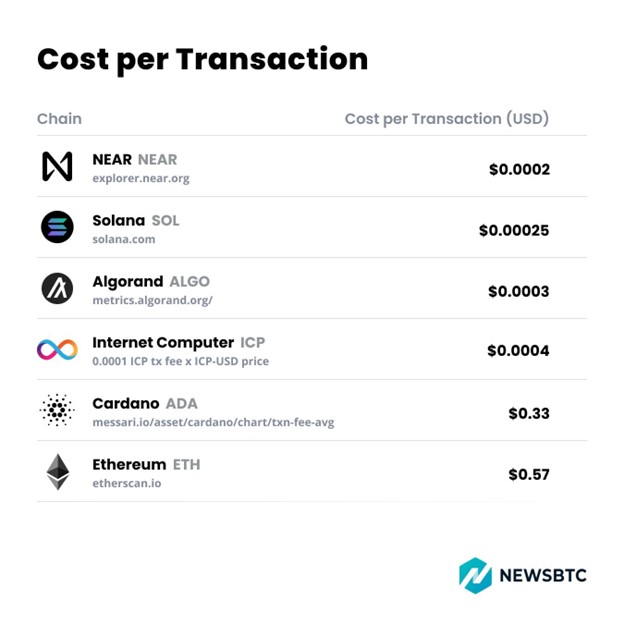
Decrease transaction prices can help the event of recent income fashions for web sites and functions, equivalent to micro-transaction fashions equivalent to ideas. For such fashions to emerge, the transaction prices of the blockchain want solely be a fraction of the anticipated common transaction value.
power effectivity
Industries world wide are working to develop into extra sustainable within the face of local weather change. Vitality effectivity has additionally develop into a significant focus throughout the crypto sector, the place it will also be seen as a measure of a blockchain’s means to execute and subsequently its scalability.
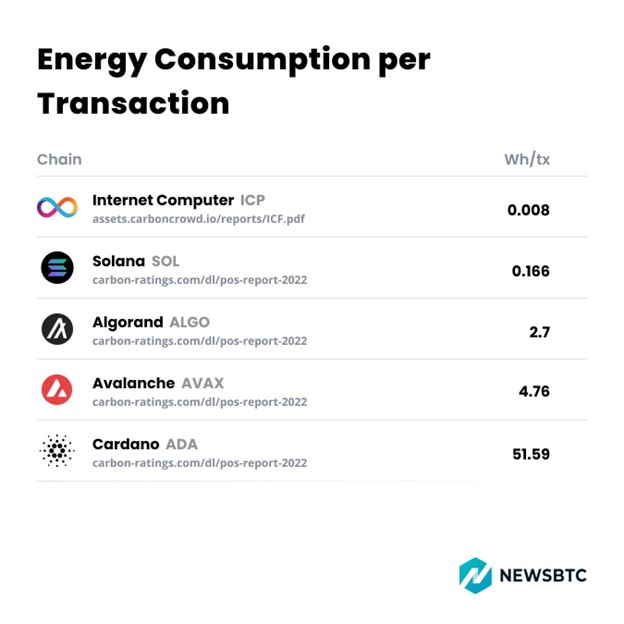
Enhancing the effectivity of a blockchain not solely reduces the carbon footprint of the expertise stack, but in addition reduces the power prices related to the protocol. Extra power environment friendly networks and the functions constructed on them could have a bonus in an more and more aggressive market.
On-Chain Storage Prices
On-chain storage has been an ongoing problem for blockchains, which usually battle to scale to fulfill the calls for of consumer-facing functions that require heavy knowledge internet hosting. This has compelled many builders to depend on Web2 intermediaries for storage and frontends, compromising safety, resiliency and decentralization.
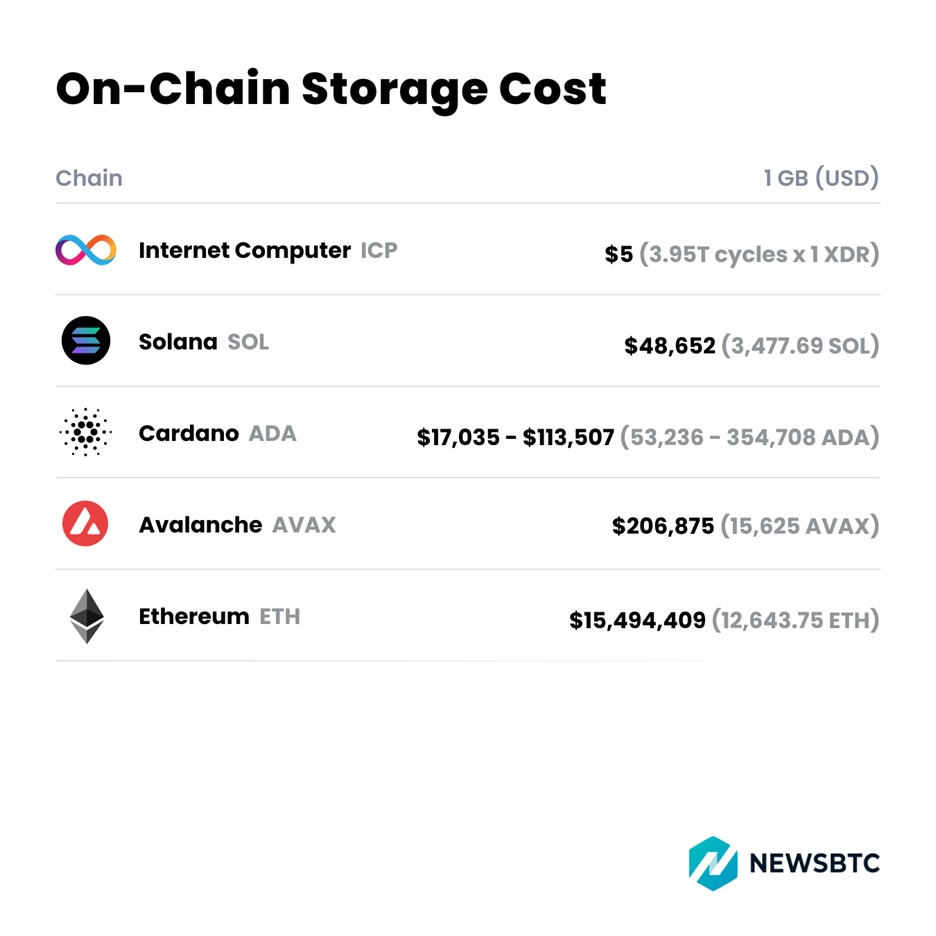
The Web laptop was discovered to have the bottom and most secure on-chain knowledge storage value among the many strongest L1 computer systems. “Gasoline” is within the type of “cycles” with 1 trillion cycles tied to 1 XDR (equal to $1.31 on the time of writing). Builders convert ICP into cycles to pay for knowledge utilization, with 1GB per 30 days requiring 329 billion cycles, which is $0.423 – that is $5.07 per GB per 12 months.
The price of storing knowledge on L1 protocols usually varies with the value of the related community token, with the associated fee growing with the value of the token and vice versa. Solana’s hire per byte-year is 0.00000348 SOL on the time of writing, which is 3,477.69 SOL hire per GB per 12 months. At SOL’s present value of $13.99, this equates to a fee of $48,652.
Cardano at present can’t retailer non-financial knowledge equivalent to media recordsdata and shops all transactions completely. For simplicity, we’ll skip the computational prices related to processing the transaction. Priced at $0.32 on the time of writing, the price of storing 1GB of transactions depends upon the scale of every transaction, with 2 million transactions of 500 bytes every having 354,708 ADA ($113,506.56) and 62,500 transactions with 16 KB every equals 53,236.08 ADA ($17,035.54) represents the bottom per byte cost.
Avalanche has a gasoline value of about 25 NanoAVAX, with 32 bytes fetching about 0.0005 AVAX. For the sake of simplicity, we’ll skip the gasoline prices for operating the good contract code and allocating the storage, and as an alternative solely think about absolutely the minimal value of SSTORE operation. Because of this storing 1 GB of knowledge prices round 15,625 AVAX. AVAX prices $13.24 on the time of writing, which equates to $206,875.
Ethereum’s congestion and high value impressed the push towards on-chain effectivity and nonetheless units the associated fee ceiling. For the sake of simplicity, we’ll skip the gasoline prices for operating the good contract code and allocating the storage, and as an alternative solely think about absolutely the minimal value of SSTORE operation. The community consumes 20,000 gasoline items to carry out the SSTORE operation on 32 bytes of knowledge. In a broader sense, it prices 625 billion gasoline items for 1GB of knowledge. On the common gasoline value of 20.23 Gwei on the time of writing, that is 12.64375 T Gwei, or 12,643.75 ETH. With ETH at $1,225.46 on the time of writing, this equates to $15,494,409.
Conclusion
Because the blockchain business evolves right into a next-generation expertise stack able to reopening the consumer web, solely a handful of platforms have the technical specs wanted to ship the person experiences that anticipated by the vast majority of Web customers.
Excessive-performing Layer 1 networks allow the event of functions and companies that aren’t attainable, together with revolutionary capabilities in safety, microtransactions, and decentralized possession of knowledge and functions.